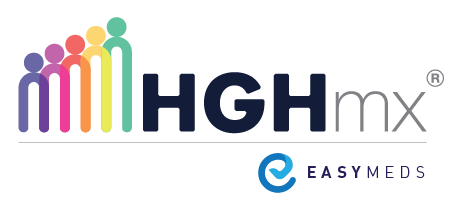Discovering that your child isn’t growing to their full potential can be a daunting realization, especially if discovered at a later stage. But with the advent of modern medicine and the use of Aromatase Inhibitors, there’s hope. Here’s what you need to know.
Every parent dreams of their child growing up healthy and reaching their full potential. But what if you discover late that your child isn’t growing as expected? The window for Growth Hormone Therapy might be short, but with the help of Aromatase Inhibitors, this window can be extended, offering a new ray of hope.
What is an Aromatase Inhibitor?
Aromatase inhibitors (AIs) are a class of drugs that inhibit the enzyme responsible for converting androgens (like testosterone) into estrogens. This process is crucial during puberty, as estrogen plays a pivotal role in the fusion of growth plates, determining the final adult height.
How do Aromatase Inhibitors Work?
During puberty, the fusion of growth plates in bones is mediated by estrogen. This fusion process involves the proliferation, differentiation, and apoptosis of chondrocytes. By inhibiting the conversion of androgens to estrogens, AIs decelerate the fusion process, potentially allowing bones to grow for a longer period.
How do Aromatase Inhibitors Help with GH Therapy in a Child?
AIs can be used therapeutically to increase adult height by delaying the fusion of growth plates. This delay provides a longer window for Growth Hormone Therapy, allowing for potentially better outcomes in height attainment.
What are Some Aromatase Inhibitor Drugs?
Several AIs have been used in pediatric settings, including:
Letrozole | A selective nonsteroidal Aromatase Inhibitor
Letrozole, a selective nonsteroidal aromatase inhibitor (AI), has shown promise in extending the growth potential of children by delaying the fusion of growth plates. Manufactured by Novartis and often marketed under the brand name Femara, Letrozole’s primary use has been in treating hormone-responsive breast cancer. However, when repurposed for pediatric growth concerns, it inhibits the conversion of androgens to estrogens, a process pivotal in growth plate fusion. Administered orally, the dosage for pediatric growth concerns may differ from its standard use and should be determined by a pediatric endocrinologist.
Anastrozole | Another commonly used Aromatase Inhibitor
Anastrozole is another nonsteroidal AI that has been explored for its potential to delay growth plate fusion in children undergoing GH therapy. Manufactured by AstraZeneca and available under the brand name Arimidex, Anastrozole primarily serves post-menopausal women with hormone receptor-positive early breast cancer. When used for pediatric growth issues, it functions by reducing estrogen levels, thereby potentially extending the window for bone growth. The oral dosage for children on GH therapy may differ from its standard prescription for breast cancer and should be determined by a specialist.
Arimidex | A brand name for anastrozole.
Arimidex is the brand name for anastrozole. As mentioned, its potential in pediatric growth concerns lies in its ability to reduce estrogen levels, which plays a role in the fusion of growth plates. When considering Arimidex for growth plate fusion delay, it’s essential to consult with a pediatric endocrinologist to determine the appropriate dosage and duration of treatment for a child on GH therapy.
Testolactone | A nonselective steroidal Aromatase Inhibitor
Testolactone is a nonselective steroidal AI that has been used in specific pediatric conditions like familial male-limited precocious puberty (FMPP) and congenital adrenal hyperplasia (CAH). Its mechanism of action involves inhibiting the enzyme responsible for producing estrogens, which can influence growth plate fusion. While it was previously available under the brand name Teslac, its use has become less common with the emergence of newer AIs. However, when prescribed for growth concerns, the dosage and administration should be tailored to the child’s specific needs and determined by a healthcare professional.
What are Aromatase Inhibitor Side Effects?
While AIs offer promising results, they are not without side effects. The most common side effects include hot flashes, joint pain, and potential bone density issues. However, in controlled studies, only minor differences in bone density were observed between placebo and letrozole treatment groups.
Conclusion
The late discovery of growth issues in children can be a challenging journey for parents. However, with the advent of Aromatase Inhibitors, there’s a renewed hope for optimizing growth potential. If you suspect your child might benefit from such treatment, consult with a pediatric endocrinologist to discuss the best course of action.
